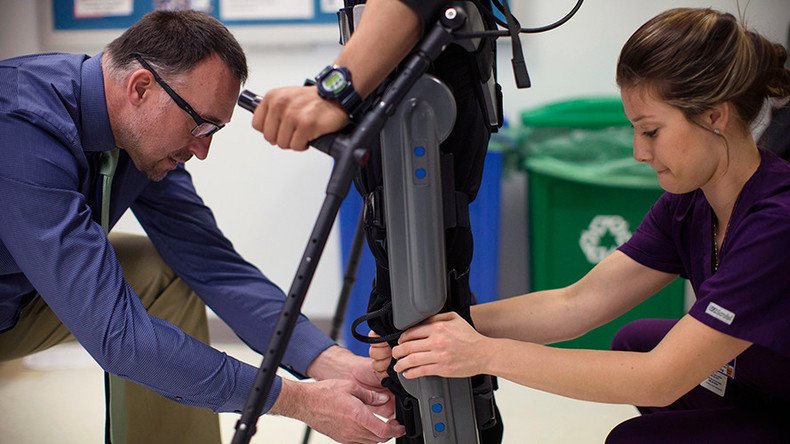Mysterious paralysis-causing syndrome appears to be on the rise – CDC

The Centers for Disease Control and Prevention (CDC) is investigating a dangerous health condition, acute flaccid myelitis, which appears to be on the rise with 50 new cases. The illness can cause temporary or permanent paralysis in severe cases.
“We continue to receive reports of sporadic cases of Acute flaccid myelitis (AFM). From January 1 to August 31, 2016, a total of 50 people in 24 states across the country were confirmed to have AFM,” said the CDC on Monday. “AFM is a rare illness that anyone can get. It affects a person’s nervous system, specifically the spinal cord. AFM can result from a variety of causes, including viral infections.”
AFM causes damage that can result in temporary or permanent paralysis in severe cases. The CDC said the syndrome has a variety of causes, including enterovirus D68.
Acute flaccid myelitis increase as CDC reports 50 cases from January to August 2016 https://t.co/1LrDOWcSm8pic.twitter.com/LFrPLze2pG
— The Voice Gh (@TheVoicegh) October 4, 2016
Symptoms include facial droop or weakness, droopy eyelids, difficulty swallowing and slurred speech.
The CDC first began receiving reports of the syndrome in August 2014, and began an investigation. By December 2014, 120 people were confirmed with the illness, many of whom were children who developed AFM.
Then, mysteriously, the number of cases dropped to 21 cases in 2015.
Infectious disease experts said parents should be aware of symptoms of enterovirus D68 infection in case the virus ends up being definitively linked to the mysterious syndrome.
"We're tracking disease and urging everyone to wash their hands and if there is any early illness to get in touch with a health care provider," Dr. William Schaffner, an infectious disease expert at Vanderbilt University Medical Center, told ABC. He said early symptoms are fever, rash and sometimes severe respiratory distress.
During the outbreak in 2014, more than 100 children in 34 states developed polio-like paralysis in an arm or a leg.
Children were being admitted to hospitals with a respiratory illness with neurological complications.
A study published in British medical journal The Lancet said a strain of enterovirus D68 is probably the leading culprit.
Researchers at the University of California, San Francisco, used genetic sequences obtained from the virus, which were cultured from 25 children with limb paralysis in Colorado and California between November 2013 and October 2014. They found the viruses were genetically very similar, sharing mutations found in the polio virus genome, but they also identified a novel strain of enterovirus D68 which they called B1 and identified as emerging four years ago.
READ MORE: Polio-like enterovirus could be behind paralysis of over 100 children
“I don’t think it’s coincidental that it’s around the time the first cases were described,” Dr. Charles Chiu, the study’s senior author, told The New York Times.
The study showed that not every child infected with the strain developed paralysis. One sibling pair was infected, but another school age girl suffered paralysis in both arms and her torso while her younger brother experienced no lasting effects.
The Lancet report said enterovirus D68 was first isolated from children with lower respiratory tract infections in California in 1962. After its initial identification, there were few cases reported until the early 2000s, when outbreaks occurred worldwide.













